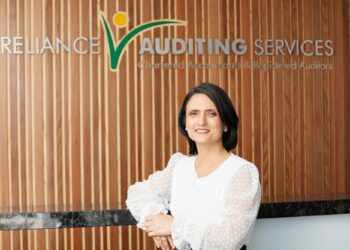Shelley Banton, head of education at ASF Audits, told a technical workshop at the recent SMSF Association Technical Summit that auditors have always been required to value assets, but it has become more important with the introduction of transfer balance caps, total super balance and now the potential impact of Div 296 tax.
“We’re in a very interesting space trying to navigate through that with clients,” she said.
Banton said under regulation 8.0 2(b), it states that all assets have to be valued at market value when a fund prepares its accounts for each year.
“Some assets are easier to value than others and it becomes very difficult when we can’t get that information and especially, for example, with unlisted entities,” she said.
“But reg 8.0 2(b) is all about market value and it’s not up to the trustees to be able to select a value that suits their purposes best. It has to be at market value. They can’t adopt a Goldilocks pricing where they go ‘Well, I’m going to value some assets high, so that that an in-house asset is artificially low, or I’m going to take another price, because I want my pensions to be at this level’.”
To determine what constitutes market value Banton said it is important to look at section 10.1 of the SIS Act which states that market value in relation to an asset means the amount that a willing buyer of the asset could reasonably be expected to pay to acquire the asset from a willing seller, if a number of assumptions were made.
“When it talks about an asset, it is talking about any form of property which also includes cash,” she added.
The first assumption that needs to be considered is that the buyer and the seller were dealing with each other at arm’s length.
“This means that there is not a fire sale and that it is not being sold to a related party from a related party at an underinflated or an overinflated price,” Banton said.
“It also means that there’s no sideline sweetheart deals being made outside the superfund and that the sale occurred after proper marketing of the asset. When we look at that, it means that the asset just wasn’t given away to the buyer, it was actually put out to the market, and all the information about that asset was known to both the buyer and the seller to be able to strike that price.”
Additionally, Banton said that it also assumed the buyer and the seller both acted knowledgeably and prudentially in relation to the sale, meaning they understood the prices for similar assets and what was happening in the market for that type of asset.
“While these are assumptions only, we really have to remember that these have to be included in the trustee’s evidence when they decide not to go down the path of getting a formal independent valuation,” she said.
“This means that the market valuation needs to be based on specific methodology, using careful consideration and sound judgment.”
However, she said one of the things not included in these assumptions is net market value, which takes into account disposal costs and depreciation.



I feel that this Labor government only proposed this tax as they believed that given their numbers, they could railroad it through the parliament.
It should never have been made public in its present form and as a business person, I would be embarrassed to produce such an equation, fraught with inconsistencies, bias, inequality, greed, countless anomalies etc etc. They refuse to make changes to it remove the inconsistencies, bias, inequality etc. I am personally embarrassed knowing that Australia has a treasury such as this that created this overly simplified formula (simply to appease non-SMSF superannuation funds) and equally, a treasurer that should know better and that should have sent this one to the keeper.
How they can actually stand by this is beyond me. If I was in treasury, or a parliamentarian, advisor to the government, etc, with any accounting nouse, I would have stood up a long, long time ago to say that this was not appropriate. Truly, I cannot understand how the rest of the Labor party and their supporters are not grossly embarrassed to be standing behind this.
I love that where I live, a traditional Labor electorate, is now, finally, a marginal seat. Its about time that we vote not by the colour of the guernsey, but to have people ready to stand to actually make a difference. Non-marginal seats create lazy politicians in many ways.
Very few are complaining about having to pay 30% tax on super taxable income (though why there is a tax free component in retirement is beyond me – just reversing this alone will create revenue for the government and when fund are used up, for those that will never be self-sufficient in retirement, the pension kicks in. A pension is not for me as I would have to change the lifestyle that I have worked so hard to achieve.). The politicians should be asking why just about every significant organisation in tax law, accounting or finance, is saying the same thing. They just need to have an open mind and actually listen, and put certain other politicians and govt agencies into line.
I see this going the same way as Labor under Shorten and others who played the class war card. It doesn’t work as there are too many aspirational Australians that also need to be relied upon to pay the bulk of the tax when they hit their hard-fought aspirational goals.
This government needs to get real. Stop wasting precious, expensive time, stop putting laws into place that will simply not stand and be overturned and lets please focus on going forwards. This is not the way.
If the Government is collecting tax based on the market value then is it time to change the rules so as to include the reasonable marketing and selling expenses?
Otherwise, the market value will lead to the government collecting more tax than what would actually be collected if the sale was dated 30 June instead of 1 July.
It would be hard to argue that there was any change in value between 30 June and 1 July, therefore requiring a sale to be valued at the full market price that was obtained on 1 July, but in reality there were costs associated in obtaining and completing that sale.